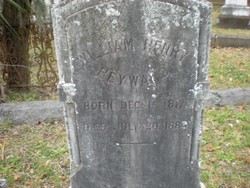"He represented the Parishes of St. Philip and St. Michael in the South Carolina House of Representatives (1844-1845) and served as a Lieut. Col. on the staff of Governor Aiken, He was a Vestryman at Sheldon and at St. Peter's Episcopal Church in Charleston. He served as a Vice President of the Carolina Art Association. In 1859 with 386 slaves he produced 16,500 bushels of rice on his Prince William Parish Plantations. He also owned 266 other slaves who lived on properties in St. Peter's and St. Bartholomew's Parishes."
"He represented the Parishes of St. Philip and St. Michael in the South Carolina House of Representatives (1844-1845) and served as a Lieut. Col. on the staff of Governor Aiken, He was a Vestryman at Sheldon and at St. Peter's Episcopal Church in Charleston. He served as a Vice President of the Carolina Art Association. In 1859 with 386 slaves he produced 16,500 bushels of rice on his Prince William Parish Plantations. He also owned 266 other slaves who lived on properties in St. Peter's and St. Bartholomew's Parishes."
Family Members
Advertisement
Explore more
Sponsored by Ancestry
Advertisement


















